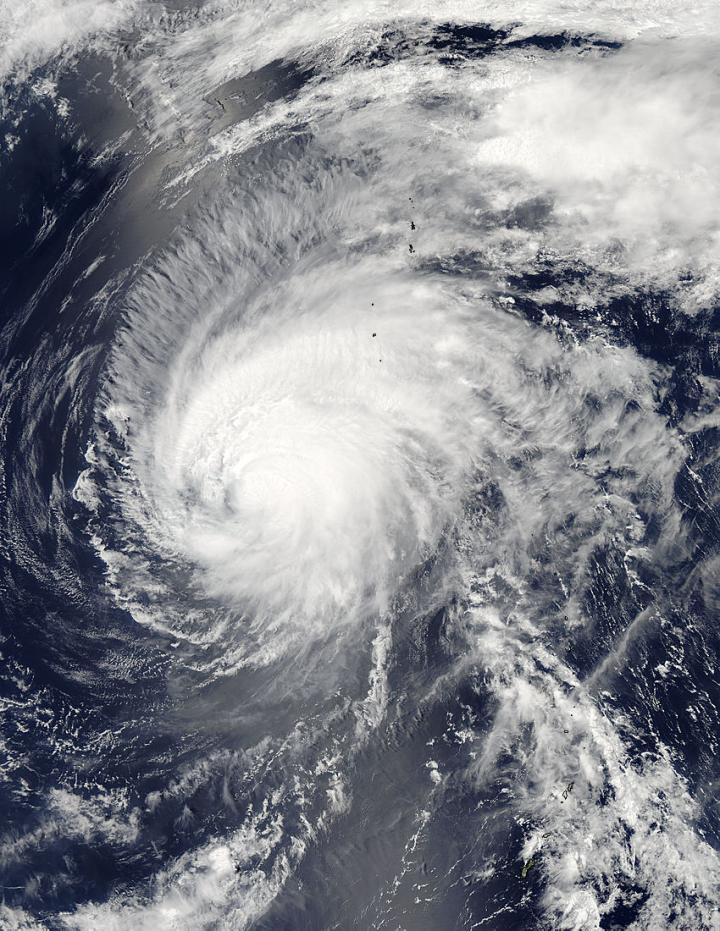

NASA's Aqua satellite captured this visible image of Typhoon Dolphin on May 18 at 04:00 UTC (12 a.m. EDT) on approach to Iwo To island, Japan.
Credits: NASA Goddard MODIS Rapid Response
The MODIS instrument or Moderate Resolution Imaging Spectroradiometer instrument that flies aboard NASA's Aqua satellite passed over Typhoon Dolphin on May 18 at 04:00 UTC (12 a.m. EDT).
MODIS provided a visible look at the storm that showed southwesterly vertical wind shear was affecting the storm and pushing clouds and showers to the northeast of the center of circulation. Although the eye is not apparent in the MODIS visible imagery, microwave imagery did confirm that a ragged eye still existed today, May 18.
Dolphin is becoming embedded in the westerlies which are stretching the storm out. Westerlies are prevailing winds that blow from west to east (between 30 and 60 degrees latitude) in the middle latitudes.
At 1500 UTC (11 a.m. EDT), Typhoon Dolphin's maximum sustained winds were near 90 knots (103.6 mph/166.7 kph). It was centered 22.8 North latitude and 138.8 East longitude, about 203 nautical miles (233 miles/376 km) southwest of Iwo To, Japan. Dolphin was moving to the north-northeast at 8 knots (9.2 mph/14.8 kph).
Meteorologists at the Joint Typhoon Warning Center adjusted the forecast track and now take Dolphin west of Iwo To. That means that the strongest winds and heaviest rainfall, located on the northeastern side of the storm is more likely to affect the island as it passes by on May 19.
Dolphin is expected to maintain typhoon strength through May 19 and begin transitioning to an extra-tropical cyclone on May 20 when it weakens to tropical storm strength as a result of increased vertical wind shear and movement over cooler sea surface temperatures.











